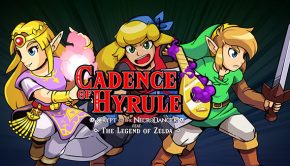Metal Gear Solid V Original Soundtrack
 |
Album Title: Metal Gear Solid V Original Soundtrack |
| Record Label: Konami Digital Entertainment |
|
| Catalog No.: GFCA-398/9 |
|
| Release Date: September 2, 2015 |
|
| Purchase: Buy at CDJapan |
Overview
The amount of attention and hype that came with the wait for and arrival of Metal Gear Solid V: The Phantom Pain only rose with the interesting changes happening for the MGS franchise. This game is now Kojima Productions’ final release, and is the first MGS game without the famous “A Hideo Kojima Game” tagline on the boxart. Famous voice actor David Hayter is now replaced by Keifer Sutherland who voices Venom Snake. And now, Harry Gregson-Williams takes the new role of music producer for the soundtrack of MGSV, being primarily scored by Ludvig Forssell, a fairly new composer in the field who had recent experience working on Senritsu no Stratus from 2011 alongside MGS veteran Nobuka Toda. With all of these changes, what kind of music could score such a game that could potentially be the end of one of the greatest videogame franchises of all time?
Released in 2015, The Phantom Pain stands as a very unique game in the franchise while still having musical elements that have appeared in past MGS soundtracks: a score that mixes orchestra with driving percussion and electronica, original songs that reflect the time period and narrative of the game, and tracks with bits of sound design that reflect their respective scenes from the story. The songs that appear in cutscenes and various radios around the game reflect the 1980s era where Venom Snake’s story takes place, and showcases booming and dynamic tracks composed by Forssell, along with Justin Burnett and Daniel James. The use of riffing strings, pulsing synthesizers, and a mix of organic and mechanic drums are much more frequent, pounding and grinding on many of the action scenes in the new open-world gameplay. This is the most Hollywood soundtrack ever made for an MGS game. Let’s see how much this approach functions with the conclusion to Metal Gear Solid.
Body
Opening the soundtrack are an electric organ and mellotron-like keyboard playing the instrumental melody of Midge Ure’s 1982 cover of David Bowie’s “The Man Who Sold The World”, introducing Snake and you, the player and listener, to the setting of the game through a catchy new wave tune that wakes up Snake in the introduction scene. It feels so surreal to hear such a pop-like track open up. In a way, it completely reflects Snake waking up from the hospital, hearing a familiar song sound different and feeling so out of place when realizing that he’s now a decade into the future after a close-to-death coma. The music feels much more familiar when you reach the next track, “V Has Come To,” featuring the introduction to Venom Snake’s theme and the new heroic and Hollywood-orchestra style of Ludvig Forssell. The music swells from soft piano to a grand theme that speaks less through melody and more through the harmonic rhythm of the orchestra, like “Time” from Hans Zimmer’s Inception. The brass marches with huge whole notes while riffing strings and dynamic percussion fills circle the music. The mix and feel of the track is pretty awesome! It does feel strange, however, in its lack of melody, something that an avid player would remember hearing in the themes of past games. The music is more broadly descriptive than dynamically explaining who Snake is.
This similar feeling occurs in the next few tracks. “You Can Call Me Ishmael” does open with an awesome feeling of an explosion through the music with the synthesizers. Ear-piercing rings open up “A Burning Escape”. You hear what sound like an alarm. Trumpets blaze in notes, a low bass pulses like a slowed-down helicopter. The rings only grow and become more piercing through what sound like drills and alarms whirring loudly. This music perfectly described what it must feel like to suddenly witness a burning man destroy everything it touches. No melody, no description of character. Just pure, simple, raw danger that blares through the entirety of this track, going back and forth from roaring brass and militaric drums to pulsing low-end synthesizers that are almost cautious of what could happen next. You really feel the orchestra playing in absolute fear! You have to escape from this monster, but you must tread so carefully and so slowly to sneak away!
The action becomes intense again with the monster-like panting and growling in the background of “Parasites”. This track is amazing in that it perfectly showcases the interactivity of the music, a 16th-note synth line defining the piece and going from soft and creepy to loud and dangerous when Snake sounds like he’s caught by these insanely fast creatures that he encounters. The track ends with a grand exit. A choir and driving orchestra lead the music to the next track, “Allegiance Defined”, Justin Burnett’s track, where the percussion and synths work together in a 7/8 time-signature piece that marches with the same feeling of cautious intensity. Calimbas and African drums come into the soundtrack once you are “Introduced to Africa”. Interestingly, the use of a chugging electric guitar, dynamic brass swells and low cello hits grows here, bringing to mind the feel of Naked Snake in the jungle in Metal Gear Solid 3. Whether this was intentional or not, it is fantastic to hear the sound of tactical espionage in the open world again through these music tracks.
Recurring themes start filling the tracks with “OKB Zero”, Snake’s theme subtly coming back in a 6/8 percussive soundscape. “Angering Mantis” brings back the piercing and intense feel from “A Burning Escape”, and “Sahelanthropus Dominion” brings back a growling synth line from Burnett’s “Hals’s Child Unchained” while mixing with Snake’s low brass, sounding more heroic and coming to the conclusion of a large battle. The thrill is fantastic in this track once the strings and brass grow along with the choir with the background. Trumpets and mechanical drills circle and pan around the music, strings riffing higher notes and drums pounding louder as the track races to the end, ending the action slowly with the music taking time to exhale and soften its drums.
“Return” brings back Snake’s theme, using different chords for its rhythm in the introduction of the track, giving an interesting sense of something new about to take place. The whole track has a feel of something in the story ending and bringing in something new. The theme plays loudly while minor chords start to suggest that more is happening. Whatever is happening, we know in the story that chronologically speaking, this is only the beginning of the “Metal Gear Solid” saga. Disc 1 ends with the beautiful voice of Donna Burke belting out amazingly in the powerful “Sins of the Father”. While having important meaning to the narrative of the game, the song is incredible and features a fantastic and harmonically dynamic composition by Akihiro Honda, making it the “Snake Eater” of this game.
Disc 2 opens with a good majority of the songs featured in the game, this time with the original theme for Quiet, featuring beautiful and lifting vocals by the character’s own voice actress Stefanie Joosten and another great composition by Honda. The song itself uses great musical phrasing by having the instruments play loud and soft, giving the music an organic and constant breath, perfectly characterizing Quiet. The soft organ of “Here’s To You” then plays, the very first song you hear in Ground Zeroes, making an amazing contrast from being the very last song you hear in Guns of the Patriots, possibly foreshadowing the saga’s transition from Big Boss to Solid Snake. After you hear “Not Your Kind of People” and “Nuclear”, tunes that perfectly resemble what sound like 80s rock ballads, the track Ground Zeroes pounds the 4-note motif that introduces the Snake of MGSV. It’s still interesting and honestly a bit disappointing that this motif becomes completely absent in The Phantom Pain, possibly due to how the two projects were scored. The motif seems to characterize Snake, but also only appears in what’s meant to be the first section of the overall “Phantom Pain” story. There might have been changes with whose ideas would take the lead in the project once Ground Zeroes was complete.
Overall, Disc 2 resembles more of a collaboration sound that closely resembles the string-heavy sound of Harry Gregson-Williams. You can hear this in the riffs in “Camp Omega” and “On The Trail”, and the melancholic choir in “The Girl’s Gone”, let alone the two tracks that Harry himself composed, “She’s Rigged” and “The Fall of Mother Base”, both of which sound like tracks that could fit in Guns of the Patriots. There’s a bigger sense of variation that comes as well with the compositions from Daniel James, taking a much more percussion-heavy approach with heavy percussion and koto in the background as heard in “Steel Embers” and heavy taiko drums in “Metal Gear Online”, while still maintaining the strong orchestral structure of the music tracks. Harry does a fantastic job as a producer giving all of these tracks an overall sense of familiarity. While I would say that I prefer the sound of Disc 1 and having the sound of one composer scoring a game, it’s nice to hear similar tracks that can create the same sense of espionage action in the Metal Gear universe.
We almost reach the end of MGSV’s soundtrack with its very hidden theme song, “A Phantom Pain”, a song that mixes the sound of modern electronica and 80s new wave. To be honest, the electronic dance feel of the song feels rather off from the more poppy and ballad-like songs that make up the lyrical songs in the game. It does come as a shame as well that this song is mostly only heard through your radio in the game. The soundtrack unfortunately ends rather abruptly with the “Various Jingles” bit. It’s very nice to hear the classic MGS1 death jingle arranged by Forssell, but it would have been nice to have these somewhere else in the soundtrack rather than the very end. Why not end it with “Here’s To You”, a tribute to Snake and as a tribute to this fine series that may very well be reaching its final chapter?
Summary
This is the most Hollywood soundtrack ever made for a Metal Gear Solid game. Does it work?
I do appreciate the importance of the songs in this game, and the powerful representation of war in the 1980s that they invoke. They serve as the most thematic material in the game, from the character of Quiet humming her melody throughout the game, to music always appearing through radios during the missions. Overall, the music for The Phantom Pain on Disc 1 feels more like the score for a movie than the mix of tracks for Ground Zeroes in Disc 2 (although some of the songs only appear in The Phantom Pain). Ludvig Forssell sacrifices melody for harmony, a similar trend in today’s movie scores. The soundtrack is powerful and creates one of the most cinematic experiences you will have in a videogame.
But at the same time, I truly miss the melodies that were heard in previous games and do wish that there were more motifs and themes to represent the characters and the ideas in the game. The Phantom Pain is already quite a dense story, one where your character is much more quiet and reserved than Solid Snake or Naked Snake. Creating a soundtrack of atmosphere rather than narrative is a very unique approach for the Metal Gear Solid series. The mix of orchestra and synthesizers reigns stronger than ever, but gone are the themes you can easily associate with characters. The sound of danger and action, however, makes you truly feel immersed into the mood and atmosphere of this story. You don’t feel as much of a grasp to Venom Snake as you would in previous games, and it leaves you focused on the big picture and overall arch of the game. The soundtrack functions well in giving the series a structured transition from the end of the Metal Gear Solid series to the beginning of where the first Metal Gear will take place. But it does leave you nostalgic for the drama and the power of the previous soundtracks.
Nonetheless, I highly recommend giving Metal Gear Solid V Original Soundtrack a listen. Explore the character of Venom Snake, and experience the power of a movie score in unique videogame format. Here’s to you, Metal Gear Solid.
Do you agree with the review and score? Let us know in the comments below!
3.5
Posted on October 29, 2015 by Renzo G. Heredia. Last modified on October 29, 2015.














